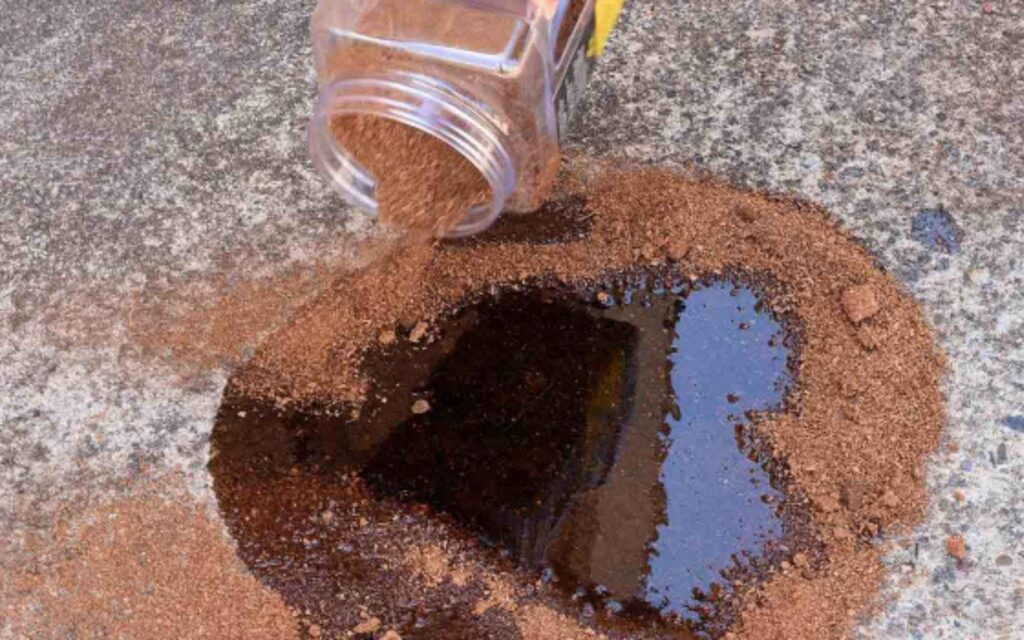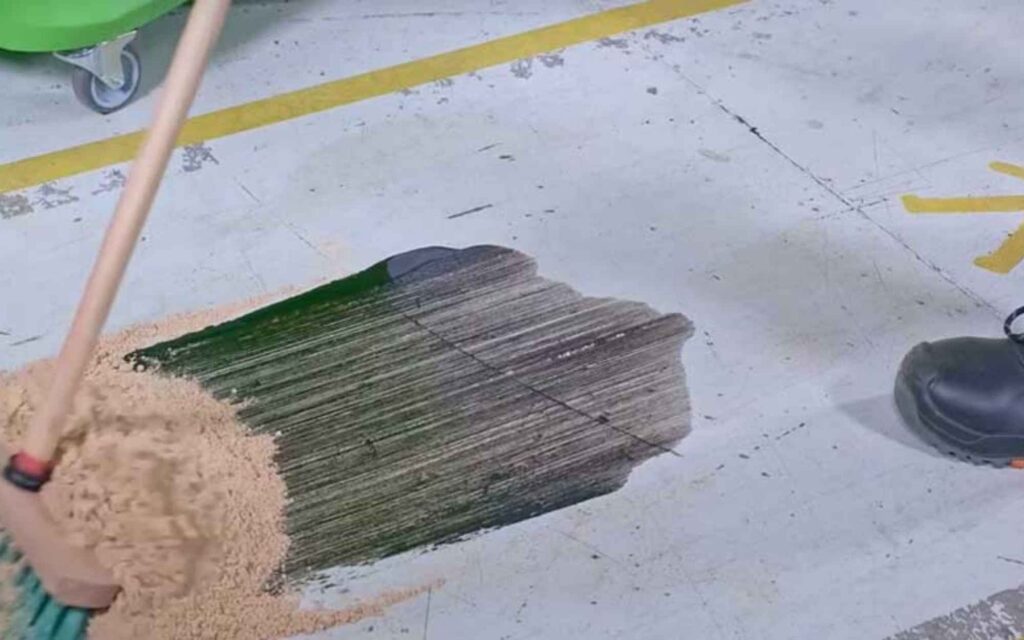Motor oil spills on concrete driveways or garage floors are not just unsightly—they’re also hazardous. Whether it’s a fresh spill or an old stain, knowing the proper steps to clean up motor oil from concrete can save your surface from permanent damage and environmental harm. In this guide, we’ll walk through immediate actions, what to avoid, and the best products to use—like kitty litter, degreasers, and dish soap.
Immediate Steps to Stop the Spread
When you notice a motor oil spill, act quickly. The longer the oil sits, the deeper it penetrates into the concrete’s porous surface.
Step-by-Step Guide:
- Contain the Spill
Use rags or paper towels to prevent the oil from spreading. - Apply Absorbent Material
Pour non-clumping kitty litter generously over the spill and gently press it down. Let it sit for at least 1–2 hours (overnight is even better). - Sweep Up
Once the litter has absorbed the oil, sweep it up with a stiff broom.
👉 For old, stubborn stains, check out our upcoming guide:
How to Remove Old Motor Oil Stains from Concrete
What Not to Do When Cleaning Motor Oil on Concrete

Many homeowners make mistakes that either set the stain deeper or cause more mess.
Avoid These Common Mistakes:
- Don’t use a pressure washer right away. It can push oil deeper into the concrete.
- Don’t apply water first. Oil repels water—this spreads the stain.
- Don’t use harsh chemicals without testing. Some cleaners can etch or discolor your concrete.
Cleaning Methods: Kitty Litter, Degreasers, and Dish Soap
After absorbing the fresh oil, it’s time to deep clean the surface.
1. Kitty Litter Method (Absorption Phase)
Use non-clumping kitty litter, as described above, for fresh spills.
2. Degreasers (Deep Cleaning Phase)
Choose a biodegradable degreaser designed for concrete. Apply directly, scrub with a stiff brush, and let it sit for 15–30 minutes.
👉 We’ll be reviewing the best products soon in:
Best Degreasers for Motor Oil on Concrete – Product Review
3. Dish Soap Method (Finishing Phase)
Mix warm water with heavy-duty dish soap. Scrub the area to break up the residue, then rinse thoroughly
Safe Disposal of Oil-Soaked Materials
Improper disposal of oil or contaminated materials is harmful to the environment.
Follow These Guidelines:
- Collect all oil-soaked kitty litter and rags in a seal-tight container.
- Take it to a local hazardous waste disposal facility—do not throw it in household trash.
- If you’re unsure where to dispose of it, check your city’s waste management website.
FAQs
Q1: What is the best way to clean up a motor oil spill on concrete?
Start by absorbing fresh oil with kitty litter, then scrub the stain using a degreaser and finish with dish soap and warm water.
Q2: Can I use baking soda instead of kitty litter?
Baking soda may work for small, fresh spills, but kitty litter is more absorbent and effective for larger areas.
Q3: How long do I leave kitty litter on the oil spill?
Leave it for at least 1–2 hours, but overnight absorption works best for maximum oil removal.
Q4: What if the stain is already old and set in?
You’ll need a stronger degreaser and may require multiple treatments. See our dedicated post:
How to Remove Old Motor Oil Stains from Concrete



